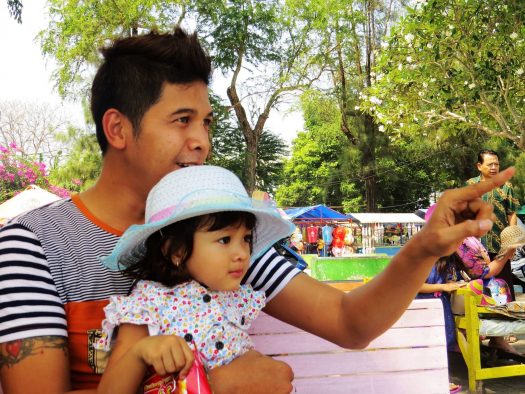By Juliann Woods, Ph.D., CCC-SLP
Recent research has reaffirmed the importance of language and literacy for children’s future academic success and has increasingly recognized the central importance of the family in the development of each. Interactions that occur between a parent and child such as comforting them when they cry, repeating their babbling, or pointing at and naming pictures in a book all serve to strengthen the child’s communication and social skills while building neural connections that support future development. Children learn from observing and imitating. When families engage in language and literacy activities, children are not only learning through their participation but they are also learning that these types of activities are preferred and reinforced by their family.
Just as with communication development, literacy skills begin to develop early and include four components:
- Phonological Awareness – the ability to recognize that sounds have meanings and make up words (e.g., ball and book are both fun but are different toys)
- Print and Alphabet Awareness – the ability to understand that written symbols have meaning (i.e., a big M sign means McDonalds)
- Comprehension of Written and Spoken Language –the ability to derive meaning from written, spoken and signed language (e.g., hearing the word stop, seeing Mom put up her hand to signal stop, and seeing a stop sign have the same meaning)
- Expressive Language and Communication – the ability to use words and sentences to share thoughts and desires (e.g., learning new words and combining them into increasingly complex sentences)
By breaking down the components, one can see how interrelated literacy and language are and how they support the child’s social and academic future. It is also wonderful that the same types of interventions can be effective for teaching them through thoughtful planning.
A primary goal is to ensure the frequency of opportunity is sufficient for child learning. We can increase frequency by learning from families what activities they enjoy that they already do and then discuss how to increase the language and literacy opportunities available without interfering with the fun or flow of their day. Starting with the family’s interests and talking about what is already supporting the child’s learning promotes the family’s sense of competence and feelings of accomplishment. It says to the family, “I can do this because I already am doing a lot of it. It isn’t brand new and more than I can manage.”
A quick word of caution, early literacy intervention can bring out the summer camp persona in all of us. Just writing this, is making me itch for my craft box. I am not suggesting that projects are a bad thing for quick and fun activities that engage a child. However, if they do not match the priorities and interests of the family, then they will not provide continuous learning opportunities that are led by the caregiver when you are not there. Tomorrow, we will share a few basic but rich examples of how to support language and literacy development simultaneously within family activities that can be done with family members both near and afar.
Image from Pixabay.com, CC0













